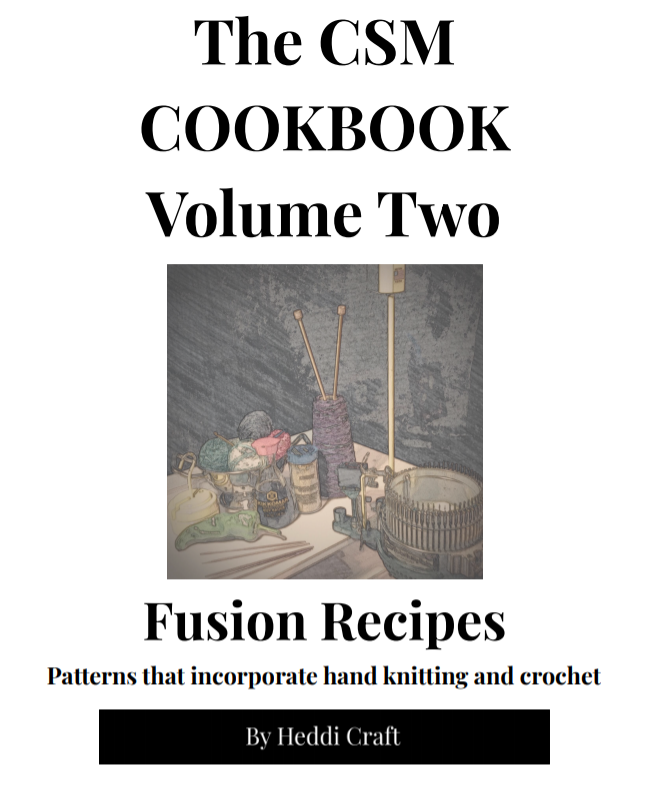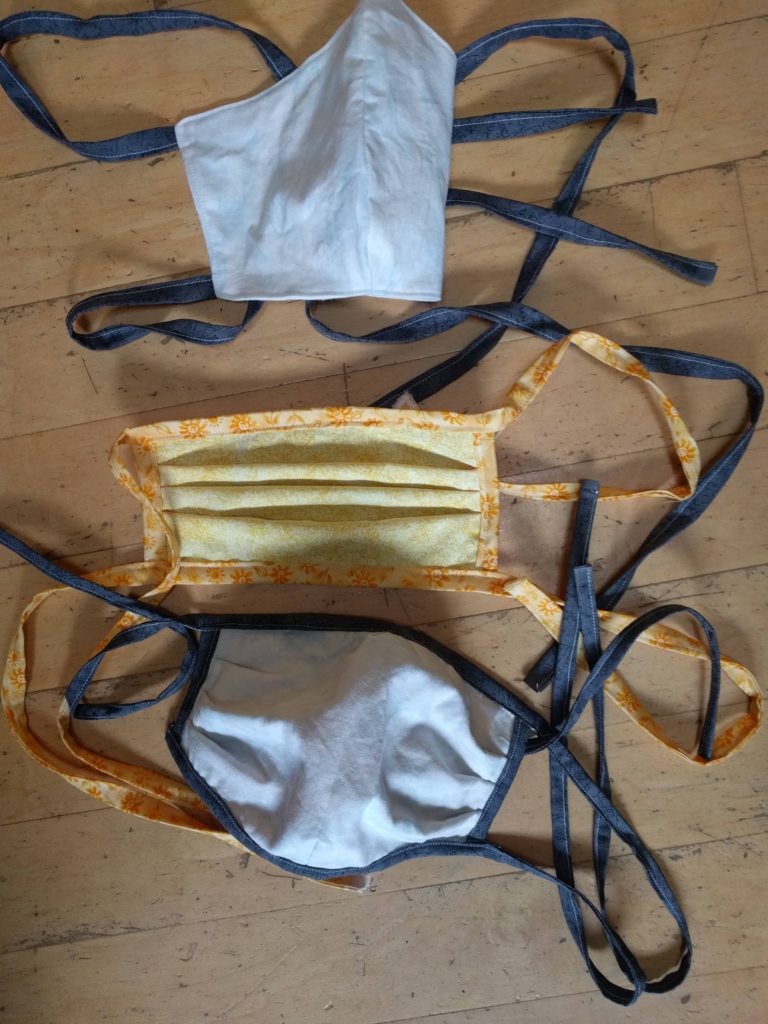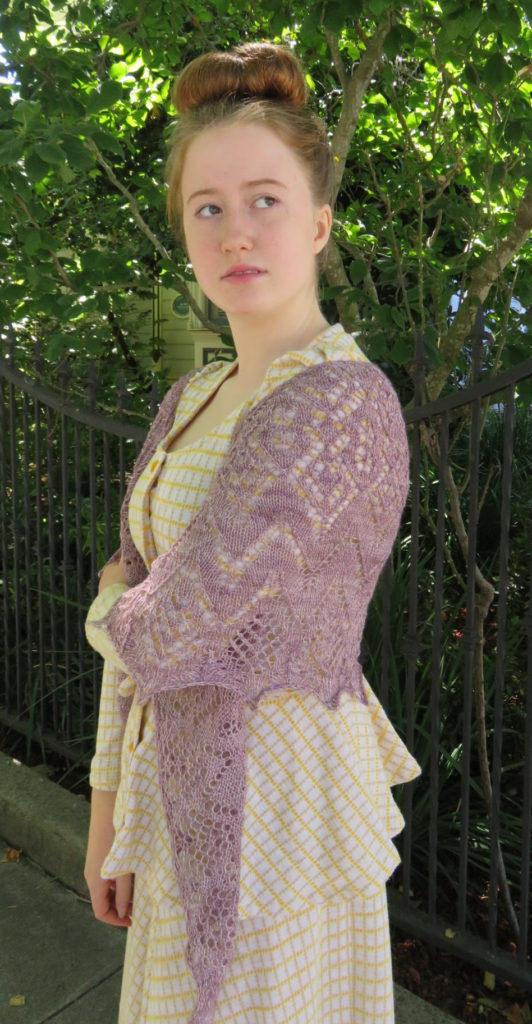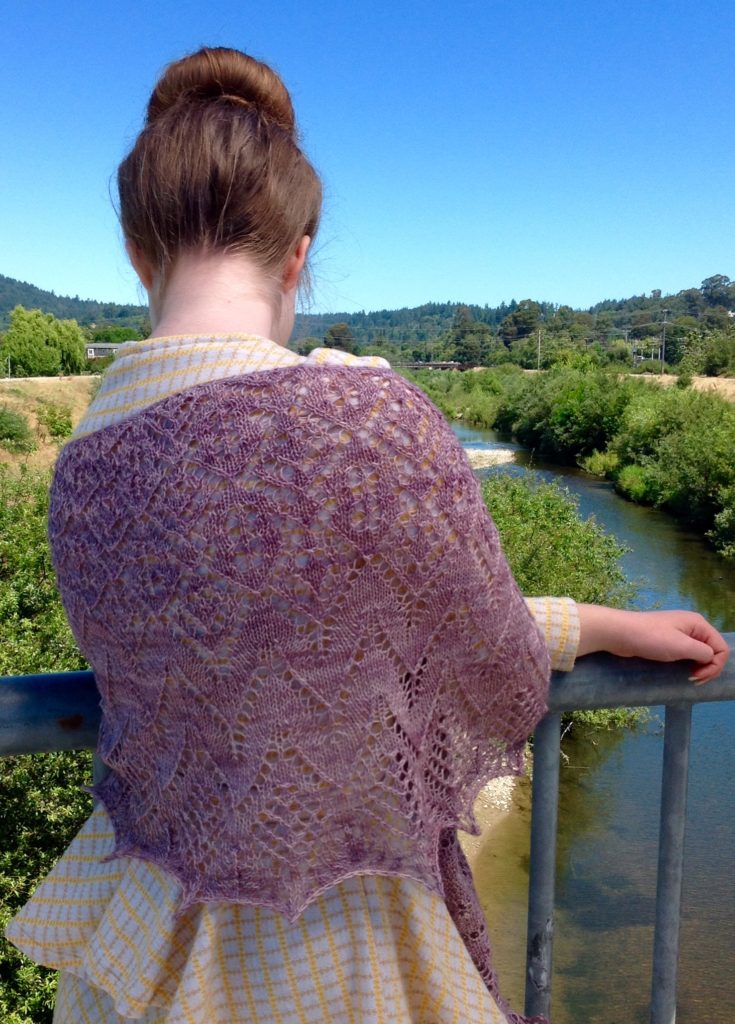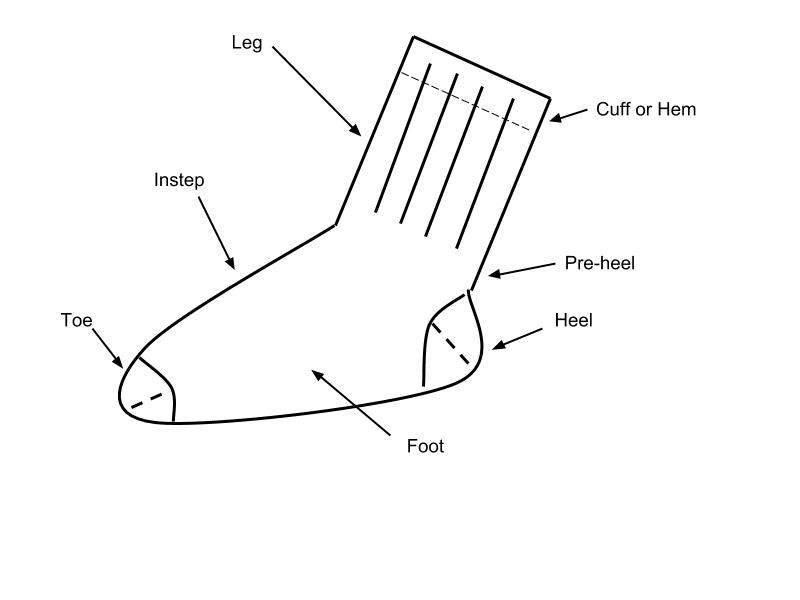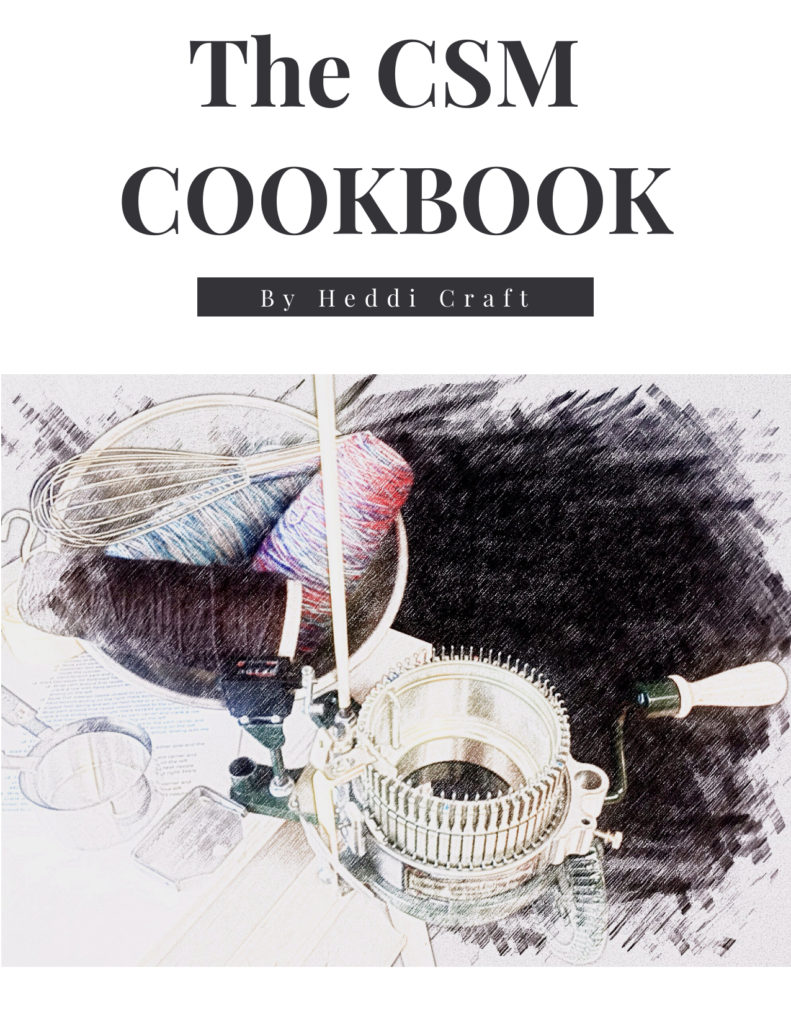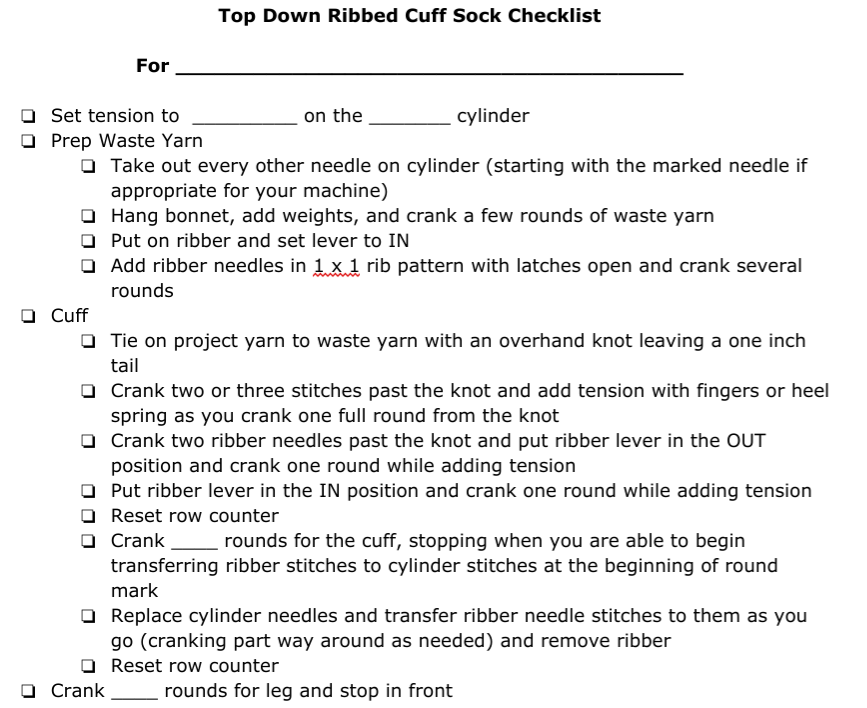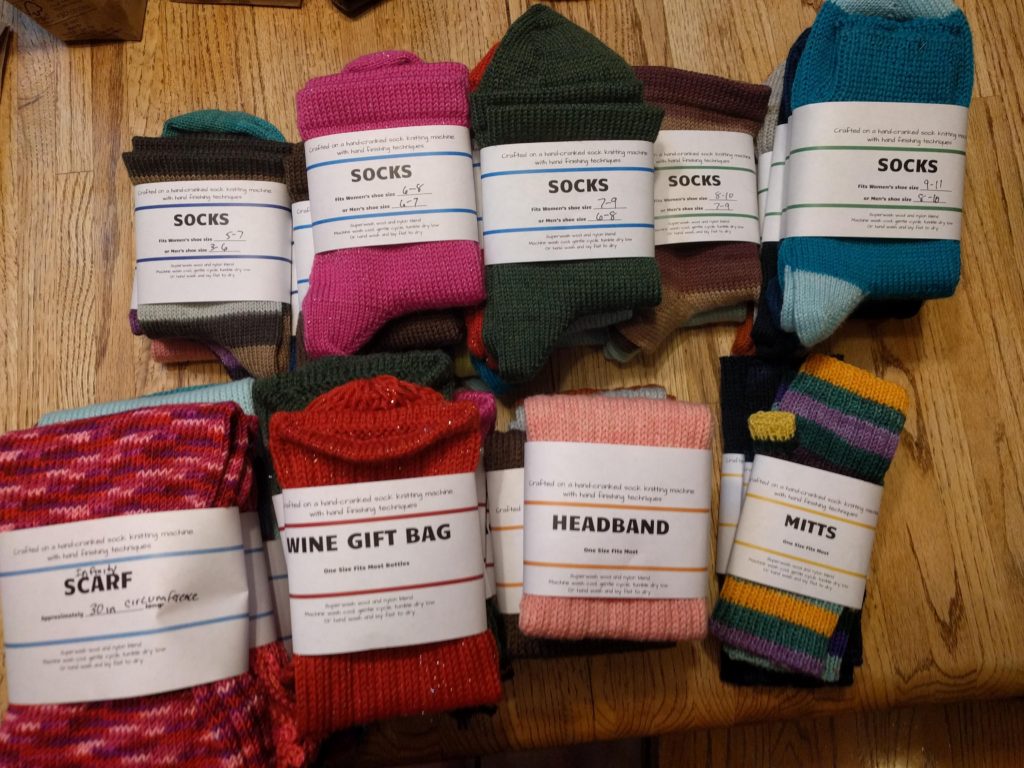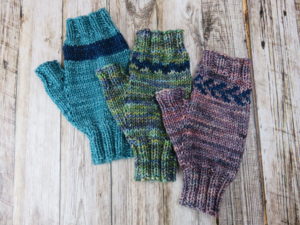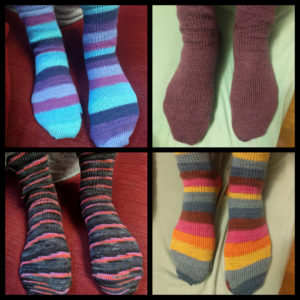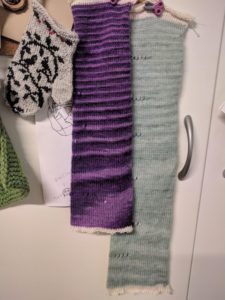A List of CSM Resources
Recommended Video Channels
SockTV: You can find the live stream of SockTV episodes on select Friday mornings at https://www.socktv.tv/live-broadcast. SockTV weeks are usually announced on the Erlbacher Gearhart Facebook and Ravelry pages and on the Circular Sock Machine 2.0 Facebook page (linked below). Over 130 archived episodes are available for $10/month from https://www.sockmachine.net/.
Knitpickin YouTube Channel: https://www.youtube.com/channel/UCAZrEMsMB2xQc-XpopwxR1w/videos Various techniques illustrated.
Grayson Erlbacher and Jamie Mayfield YouTube Channels: https://www.youtube.com/user/erlbachergearhart/videos and https://www.youtube.com/user/jmemayfield/videos Large collection of videos from the makers of the Erlbacher Gearhart. Some videos apply specifically to the Erlbacher Gearhart machine but most techniques are applicable to any machine.
TheColoradoCranker YouTube Channel: https://www.youtube.com/user/TheColoradoCranker/videos A variety of techniques including a series on making a “Sweet Sock.”
TheWizardofBC YouTube Channel: https://www.youtube.com/user/TheWizardofBC/videos A variety of techniques illustrated.
Kathy Bergeron YouTube Channel: https://www.youtube.com/channel/UCzd4MXI3vwk9MIWXWT37TYA/videos Various techniques.
Rosalyn Keys YouTube Channel: https://www.youtube.com/channel/UCyDKdTmbj9khKhO_yYEvnOg/videos A variety of techniques with a focus on special patterning.
Rosie’s Art Studio YouTube Channel: https://www.youtube.com/user/DreambuildersQuilt1/videos Eight of the oldest videos on this channel are about making socks on a CSM. Shows how to make two types of sock from start to finish.
Crafts from the Third Floor YouTube Channel: https://www.youtube.com/channel/UCbBMRJ9uOozGvROIaSL2ydQ Check out the “Gertie and Me” series on this channel for videos aimed at beginners.
Supportive Online Social Groups
Ravelry has quite a few forums for circular sock machine knitters. Ravelry is a social media platform especially for knitters, crocheters, and weavers and requires a membership to join but it is free and is probably the most respectful of privacy of any online forum. Check out the following groups on Ravelry.
Erlbacher Gearhart Knitting Machine Company: https://www.ravelry.com/groups/erlbacher-gearhart-knitting-machine-co
Circular Sock Machine: https://www.ravelry.com/groups/circular-sock-machine
Circular Sock Knitting Machine Society: https://www.ravelry.com/groups/circular-sock-knitting-machine-society-cskms
Completely Circular and Arbitrary Sock Knitting Machines: https://www.ravelry.com/groups/completely-circular-and-arbitrary-sock-knitting-machines
Sock Knitting Machines and Friends: https://www.ravelry.com/groups/sock-knitting-machines-and-friends
Facebook also has several active sock knitting machine groups, including:
Circular Sock Machine Knitters 2.0: https://www.facebook.com/groups/561948523913745/
Erlbacher Gearhart Knitting Machine Company: https://www.facebook.com/Erlbacher-Gearhart-Knitting-Machine-Company-125605310823212/
Other Useful Websites and Organizations
The Circular Sock Knitting Machine Society has an extensive list of free resources and also has a membership program and newsletter with even more information: https://cskms.org/
The Machine Knitter’s Treasure Chest has a variety of resources for CSM owners: http://www.needlesofsteel.org.uk/csm.html
Sock Machine Knitting Newsletter including DVDs of newsletter archives: http://spear-point.org/news/index.html
Manuals for Machines
Manuals will have information on how to set up your machine, adjust tension, engage the heel spring, clean you machine, etc. New machines will come with a manual but you can also find manuals for antique machines here: https://cskms.org/resources/csm-manuals/
Another source for manuals is here: http://machineknittingetc.com/csm.html
Timing Your Ribber
Steve Ashton (aka TheWizardofBC) has a detailed tutorial on adjusting first the cylinder settings and then the ribber settings of your machine. You can find these tutorials on Ravelry here:
https://www.ravelry.com/projects/TheWizardofBC/basic-factory-settings—part-1—the-cylinder-assembly
https://www.ravelry.com/projects/TheWizardofBC/basic-factory-settings—part-2–the-ribber-assembly
And the same information in a PDF format on the Circular Sock Machine Knitters 2.0 Facebook group as “Basic Factory Settings” parts 1 and 2 here:
https://www.facebook.com/groups/561948523913745/files/
Marking Your Cylinder
Here is one example of how to mark a cylinder: http://www.thecoloradocranker.com/2009/04/blogger-chart-of-great-value.html
See the manual for your machine for other options.
Fixing Mistakes
A video on fixing dropped stitches: https://youtu.be/wrevswuo4BE
Unknitting on a CSM: http://measuredthreads.com/the-unknit/
Making a Soft Weight
http://www.thecoloradocranker.com/2013/08/0-0-1-771-4401-colorado-cranker-36-10.html
Purchasing Tools and Parts
https://autoknitter.com/sock-machines-sock-machine-accessories/
